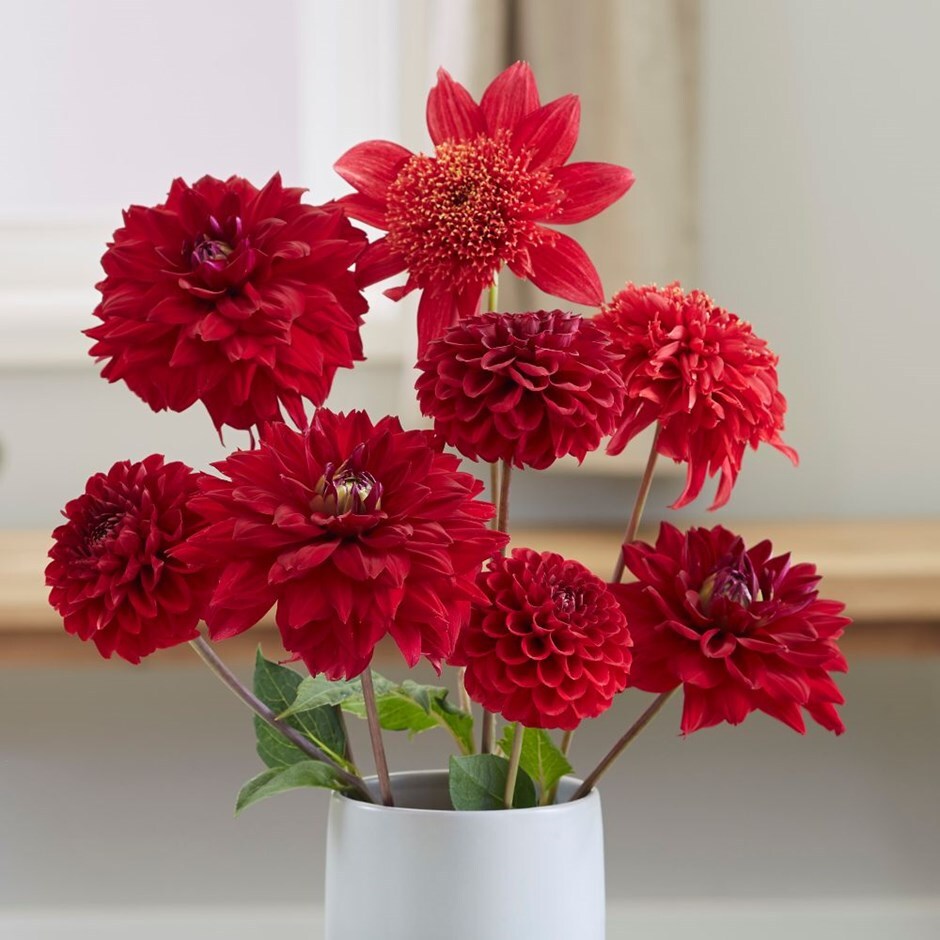In each collection you will receive one tuber of each of the following cultivars:
Dahlia 'All Directions': Chosen for its impressive 10cm wide flowerheads, which open from bud a sumptuous shade of red, but then fade to warm vermilion as the season progresses. Its flaming colour really stood out in the trial beds - particularly when set against the backdrop of rich green foliage. Grows to 1.2m.
Dahlia 'Red Cap': Fire engine, or telephone box red describes the colour of this free-flowering ball dahlia. Fabulous when planted in a border with deep purple, rich orange or yellow, ‘Red Cap’ will also look dazzling against a backdrop of silvery or bronze foliage. It flowers freely from midsummer to mid-autumn, and the blooms make excellent subjects for a vase. Grows to 90cm.
Dahlia 'Jive': The flowerheads of this eye-catching dahlia are slightly variable, being a mixture of single or anemone-shaped, while their 'petals' are initially pink-tinted scarlet, but turn a warm orange-red as they age. Their lush green foliage, which is lacier than many other forms, is also attractive, and adds further to the appeal. Grows to 1.2m.






